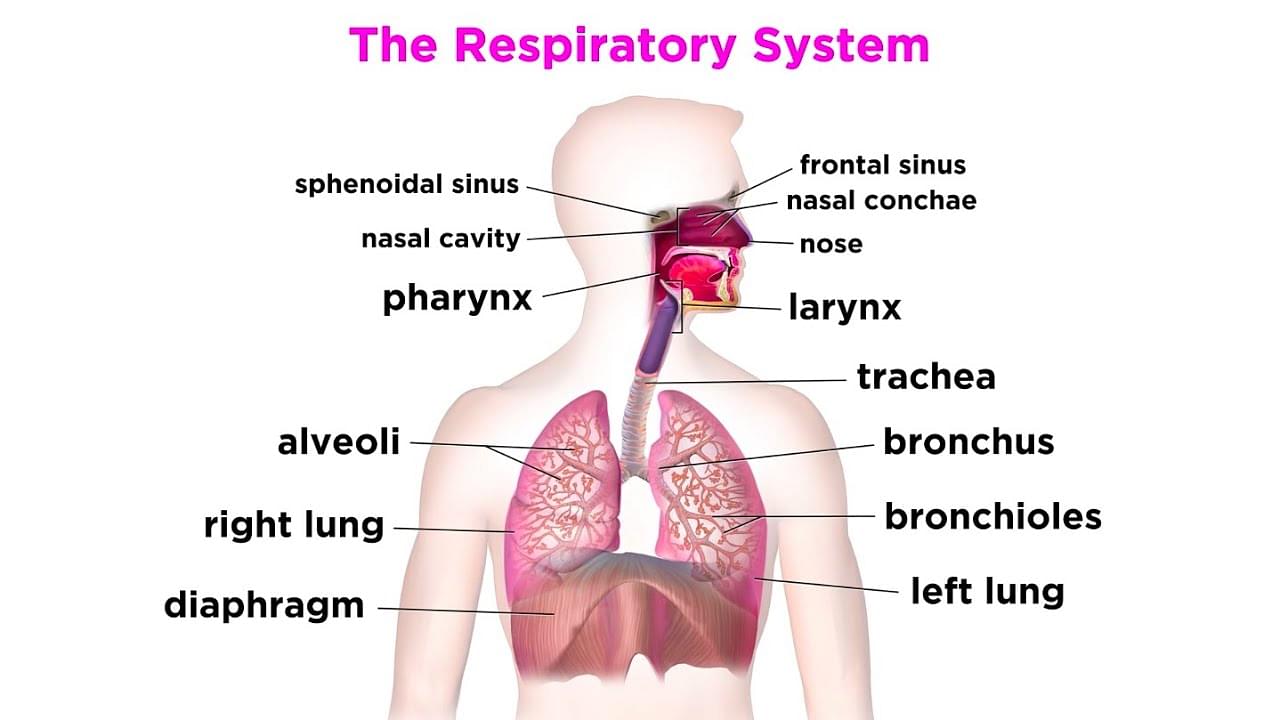The lungs are covered by _____ membrane.
- pleural
- pericardial
- meninges
- vitelline
The Correct Option is A
Solution and Explanation
Top Questions on The respiratory system
- Which of the following interventions facilitates the removal of airway secretions collected centrally?
- CUET (PG) - 2025
- MPT
- The respiratory system
- Which of the following is a non-modifiable risk factor for the development of COPD?
- CUET (PG) - 2025
- MPT
- The respiratory system
- Arrange the following in the correct sequence of branching in conducting zone and respiratory zone of respiratory passage.
(A) Alveolar sacs
(B) Bronchi
(C) Bronchioles
(D) Trachea
(E) Alveolar ducts
- CUET (PG) - 2025
- MPT
- The respiratory system
- The transfer of \(O_2\) from outside environment to cells and removal of \(CO_2\) is referred to as
- Bihar Board X - 2025
- Science
- The respiratory system
- The TCA cycle starts with the condensation of acetyl group with
- KCET - 2025
- Biology
- The respiratory system
Questions Asked in COMEDK UGET exam
- A satellite is revolving around the earth in a circular orbit with kinetic energy of $1.69 \times 10^{10}$ J. The additional kinetic energy required for just escaping into the outer space is
- COMEDK UGET - 2024
- Escape Speed
A solid cylinder of mass 2 kg and radius 0.2 m is rotating about its own axis without friction with angular velocity 5 rad/s. A particle of mass 1 kg moving with a velocity of 5 m/s strikes the cylinder and sticks to it as shown in figure.

The angular velocity of the system after the particle sticks to it will be:- COMEDK UGET - 2024
- The Angular Momentum
- In a given semiconductor, the ratio of the number density of electron to number density of hole is 2 : 1. If $ \frac{1}{7} $th of the total current is due to the hole and the remaining is due to the electrons, the ratio of the drift velocity of holes to the drift velocity of electrons is :
- COMEDK UGET - 2024
- Semiconductors
- A transformer which steps down 330 V to 33 V is to operate a device having impedance 110 $\Omega$. The current drawn by the primary coil of the transformer is:
- COMEDK UGET - 2024
- Transformers
- In the Young's double slit experiment, the 2nd bright fringe for red light coincides with the 3rd bright fringe for violet light. Then the value of 'n' is: (Given: wavelength of red light = 6300 $\text{Å}$ and wavelength of violet light = 4200 $\text{Å}$)
- COMEDK UGET - 2024
- Youngs double slit experiment
Concepts Used:
The Respiratory System
Human Respiratory System is a compound biological system of organs and tissues that helps in gaseous exchange. The system includes airways, lungs, and blood vessels. Its core function is to introduce oxygen and expel carbon dioxide from the body. The atmospheric air is continuously pumped in and out through a system of pipes which are called the conducting airways. There are a great number of muscles and blood vessels involved in the whole process of respiration.

Features of Human Respiratory System:
- The respiratory system is essential for inhalation of oxygen and transportation of the same to the different parts of the body where it is used for cellular respiration.
- The design of the lungs is created in a manner that helps in gaseous exchange in an efficient manner. The other parts of the respiratory system such as the nose, pharynx, larynx, trachea, and bronchi help in the process of bringing in oxygen to the lungs and taking carbon dioxide out of it.
- There is an arrangement of muscles such as the diaphragm and intercostal muscles that aid in the process of human respiration.